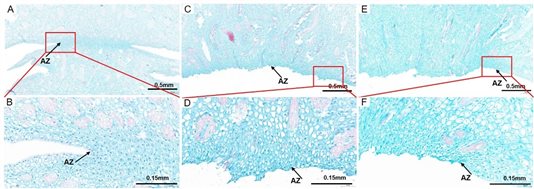预约演示
更新于:2025-12-23

Central South University of Forestry & Technology
更新于:2025-12-23
概览
标签
肿瘤
其他疾病
呼吸系统疾病
小分子化药
疾病领域得分
一眼洞穿机构专注的疾病领域
暂无数据
技术平台
公司药物应用最多的技术
暂无数据
靶点
公司最常开发的靶点
暂无数据
| 排名前五的药物类型 | 数量 |
|---|---|
| 小分子化药 | 2 |
关联
2
项与 中南林业科技大学 相关的药物CN115806575
专利挖掘作用机制 BAX抑制剂 [+4] |
在研机构 |
原研机构 |
在研适应症 |
非在研适应症- |
最高研发阶段药物发现 |
首次获批国家/地区- |
首次获批日期- |
100 项与 中南林业科技大学 相关的临床结果
登录后查看更多信息
0 项与 中南林业科技大学 相关的专利(医药)
登录后查看更多信息
4,350
项与 中南林业科技大学 相关的文献(医药)2026-12-01·Nano-Micro Letters
A Promising Strategy for Solvent-Regulated Selective Hydrogenation of 5-Hydroxymethylfurfural over Porous Carbon-Supported Ni-ZnO Nanoparticles
Article
作者: Tian, Ziqi ; Liu, Chao ; Chai, Yongming ; Jiang, Jianchun ; Zhang, Kaili ; Huang, Rulu ; Wang, Kui
Abstract:
Developing biomass platform compounds into high value-added chemicals is a key step in renewable resource utilization. Herein, we report porous carbon-supported Ni-ZnO nanoparticles catalyst (Ni-ZnO/AC) synthesized via low-temperature coprecipitation, exhibiting excellent performance for the selective hydrogenation of 5-hydroxymethylfurfural (HMF). A linear correlation is first observed between solvent polarity (ET(30)) and product selectivity within both polar aprotic and protic solvent classes, suggesting that solvent properties play a vital role in directing reaction pathways. Among these, 1,4-dioxane (aprotic) favors the formation of 2,5-bis(hydroxymethyl)furan (BHMF) with 97.5% selectivity, while isopropanol (iPrOH, protic) promotes 2,5-dimethylfuran production with up to 99.5% selectivity. Mechanistic investigations further reveal that beyond polarity, proton-donating ability is critical in facilitating hydrodeoxygenation. iPrOH enables a hydrogen shuttle mechanism where protons assist in hydroxyl group removal, lowering the activation barrier. In contrast, 1,4-dioxane, lacking hydrogen bond donors, stabilizes BHMF and hinders further conversion. Density functional theory calculations confirm a lower activation energy in iPrOH (0.60 eV) compared to 1,4-dioxane (1.07 eV). This work offers mechanistic insights and a practical strategy for solvent-mediated control of product selectivity in biomass hydrogenation, highlighting the decisive role of solvent-catalyst-substrate interactions.Graphical Abstract
2026-02-01·TALANTA
An ICT-based mitochondrial binding enhanced fluorescent probe for measurement of monoamine oxidase A in living cells
Article
作者: Deng, Ting ; Hu, Yingcai ; Chen, Daian ; Li, Jishan ; Guo, Zhen
In this study, we developed an intramolecular charge transfer (ICT)-based fluorescent probe (TPA-S-P), which features a donor-π-acceptor push-pull architecture, in which the donor triphenylamine (TPA) moiety was conjugated to the 1-methyltetrahydropyridine (P) acceptor moiety through a thiophene (S) bridge. In the presence of Monoamine Oxidase A (MAO-A), the P acceptor moiety was oxidized to a positively charged methylpyridinium moiety (Ps), which was capable of binding to the negatively charged mitochondrial membrane, resulting in significantly enhanced fluorescent emission signals. Compared with other potential interfering substances, TPA-S-P showed excellent selectivity for MAO-A. We verified the excellent imaging performance of TPA-S-P through the in vitro imaging experiment of SH-SY5Y cell model. TPA-S-P is expected to become a powerful tool to monitor MAO-A activity for the future study of MAO-A related diseases.
2026-02-01·SPECTROCHIMICA ACTA PART A-MOLECULAR AND BIOMOLECULAR SPECTROSCOPY
Ratiometric probe AMC@ZIF-8 integrating intelligent algorithm and HSV mode for visual on-site detection of tetracycline in environmental water samples
Article
作者: Li, Hongchang ; Huang, Jiawei ; Li, Yuxin ; Xiao, Jian ; Wen, Ruizhi ; Guo, Yuxin ; Lin, Jiali
The residues of tetracycline (TC) in the environment pose a serious threat to ecosystems and human health, and it is difficult to meet the on-site rapid monitoring requirements. Therefore, the development of an intelligent, portable, visualized detection device for TC is of great significance for achieving real-time environmental monitoring and accessible food safety control. Herein, a non-fluorescent metal-organic framework material (ZIF-8) was combined with blue-emitting 7-amino-4-methylcoumarin (AMC) via electrostatic interaction to construct a high-efficiency ratiometric probe AMC@ZIF-8 for the detection of TC. The blue fluorescence of AMC, which did not react with TC, serving as the reference signal at 452 nm, while the aggregation-induced emission (AIE) effect between TC and ZIF-8 produced a yellow-green fluorescence at 525 nm, using as the response signal. Therefore, a linear relationship between the AMC@ZIF-8 composite and the added TC was obtained over the range of 0.03-40 μM. This ratiometric fluorescent probe demonstrated recovery rates of 95.4 %-107.8 % (RSD ≤ 4 %) in real water samples, with a detection limit as low as 10.08 nM. Furthermore, an intelligent application based on the random forest algorithm was developed, which could extract hue, saturation, and value features from the HSV color space. The model achieved a test set accuracy of 99.41 % within the 0-50 μM concentration range. The application integrates image acquisition, feature extraction, and visual concentration prediction functions, and supports real-time analysis on smartphones, offering a low-cost, high-accuracy semi-quantitative solution for food safety and environmental monitoring.
3
项与 中南林业科技大学 相关的新闻(医药)2025-10-28
为推动药物制剂领域的创新发展,加强产学研深度融合,由长沙医学院主办的“新型药物制剂研发创新论坛”于2025年10月26日下午2:00在长沙医学院生科楼107隆重举行并取得圆满成功。本次论坛围绕新型药物制剂的最新研究成果、关键技术挑战与未来发展趋势进行了深入探讨与交流。
参会嘉宾合影
本次论坛中,中南大学钟世安教授介绍了其在药食用菌资源高值化利用方面的突破性进展。团队以特色平菇为研究对象,成功分离纯化出一类结构新颖的硒多糖,并综合利用多种现代分析技术,系统阐明了其在成分组成、基本骨架、分子尺寸及形态构象等多层次结构信息。研究表明,该类硒多糖平均分子量达数万至数十万道尔顿,单糖组成复杂多样,糖苷键类型、连接位点与序列结构均展现出丰富的结构多样性,为深入开发其生物活性与制剂应用提供了重要的科学依据。
中南大学钟世安教授作会议报告
中南林业科技大学曾柏全教授作了题为“现代生物技术在生物制药中的创新应用”的学术报告。曾教授及其团队聚焦于生物制药过程中的关键技术瓶颈,系统阐释了如何利用合成生物学、蛋白质工程及高效表达系统等现代生物技术手段,来革新生物药的生产工艺、提升药物效能并开发新型治疗产品。
中南林业科技大学曾柏全教授作会议报告
中南大学湘雅医院王振兴副研究员系统介绍了一种基于压电纳米材料的超声驱动治疗新策略,用于治疗MRSA相关性骨髓炎这一临床难题。研究团队战略性地整合内源性与外源性三联疗法触发因子,设计并合成了铜掺杂钡钛酸钡纳米粒子(Cu-BTO NPs)作为压电催化核心。该材料相较于未掺杂BTO表现出更强的超声吸收能力。为进一步增强其功能,研究人员对纳米颗粒进行了胍基团表面修饰(Cu-BTO@Gua),使其能够有效渗透生物膜物理屏障,显著提升声动力催化清除效果。
中南大学湘雅医院王振兴副研究员作会议报告
长沙医学院罗金雀副教授及其团队系统阐明了SIRT6、NLRP3关键靶点在打破“代谢-炎症”恶性循环中的核心作用,获得了具有明确多器官保护效应的候选药物分子RUT衍生物,并揭示了其深层机制。长沙医学院董丽萍副教授及其团队提供了一种制备生物矿化纳米颗粒的简单方法,并为通过Cu2+生物矿化大分子药物递送提供了一种通用策略。长沙医学院范家龙副教授及其团队针对三阴性乳腺癌(TNBC)这一临床难治性肿瘤,致力于通过深入挖掘纳米药物的作用机制,推动药物设计的理论创新。长沙医学院邓新山副教授及其团队以市场为导向,聚焦GSPT1靶点,基于结构优化设计,最终获得高潜力的候选药物,为后续开发奠定基础。
长沙医学院罗金雀副教授作会议报告
长沙医学院董丽萍副教授作会议报告
长沙医学院范家龙副教授作会议报告
长沙医学院邓新山副教授作会议报告
本次论坛的成功举办,充分展现了长沙医学院在药学创新领域的深厚积累与前沿视野。与会专家围绕药物研发的关键科学问题,从特色资源开发、生物技术应用、纳米制剂设计到临床难治性疾病治疗,展开了一系列高水平、多角度的深入交流,呈现了从基础研究到临床转化的完整创新链条。
展望未来,长沙医学院将继续以服务人民健康为己任,深化“产学研医”协同创新机制,将论坛凝聚的智慧成果转化为推动学科发展与产业进步的不竭动力,为助力健康中国建设贡献更多“长医智慧”与“长医力量”。
【图 文】张莉
【一审】张莉 陈宏宇 肖凌芳 何宇荣 雷怡菲
【二审】李鑫
【三审】吴奔
往期推荐
破题创新谋发展!长沙医学院论坛聚智擘画中医药农业新未来
引进/卖出
2023-11-28
·药融圈
现场免费供需发布名额有限,填写表单立即报名随着PD-1单抗上市,再到后来基因疗法、细胞疗法等多种创新生物技术的层出不穷,小分子药物的处境似乎并不理想。部分小分子药物市场被生物药占领,小分子药物研发成功率也相对较低。然而即便如此,在肿瘤领域,传统小分子药物依旧占据着近半壁江山,时不时地冒出些重磅M&A事件。PROTAC技术、分子胶、AI药物研发等新技术的发展与进步给小分子药物研发带来了新的研发思路,小分子药物研发重新焕发了生机。推动制药产业高质量发展需要从原料药产业入手。化学原料药是药品的基础原料,处于医药产业链的上游,是保障下游制剂生产、满足临床用药需求的基础,是影响药品质量、制约产能的主要环节。小分子药物研发路在何方?小分子创新药行业发展环境向好,新产品不断涌现,但仍存在创新力不足、研发投入不足、产品市场空间受限、资本运作粗糙等诸多挑战。小分子化药要想脱颖而出,坚持可持续化发展,差异化创新是关键。11月30日,湖南省小分子化药产业发展论坛在湖南长沙举办。本期论坛围绕小分子原料药开发创新,可持续发展,原料药制剂产业链协同等开展,同期为参会/参展企业提供学习、交流与合作平台。 观众预登记火热进行中 点击图片立即报名参会▼01论坛信息/ ABOUT FORUM活动时间 | 2023年11月30日 活动地点 | 梅溪湖国际文化交流艺术中心艺术馆一层参加对象 | 医药原料药,制剂及相关企业签到有礼 | 现场签到即可领取精美签到礼,前50名还可获得50元京东卡,先到先得!签到有礼京东卡先到先得02日程安排/ FORUM AGENDA14:30-14:45主办方致辞及介绍14:45-15:05阿莫西林的生物合成技术的发展许 岗福来格董事长15:05-15:25成本源于设计之特色原料药工艺开发邱小龙美迪西CMCAPI部门负责人/执行主任15:25-15:45面向老年人群的原料药品种储备张起辉迈德凯医药有限公司创始人15:45-16:05复杂多糖类药物/辅料开发与国产替代刘 权苏州臻博生物医药科技有限公司CEO 16:05-16:25中国企业制剂出口美国市场案例分享钭勇亮美国吉马莱博有限公司中国代表处首席代表 16:25-17:00圆桌讨论:寻找下一个增量1、针对目前整体全球市场行情,不同医药企业不同观点分享,每家差异化2、对于未来增量在哪里,跨界还是在上下游找机会?圆桌主持:王 波 药融圈创始人圆桌嘉宾:钱炜雯 湖南吴赣药业有限公司副总经理肖稳定 湖南九典制药股份有限公司,药物研究院院长张起辉 迈德凯医药有限公司创始人 刘 权 苏州臻博生物医药科技有限公司CEO 17:00-17:40项目供需发布环节(立即扫码报名)*议程更新中,以会议现场为准03嘉宾介绍/ ABOUT GUESTS钱炜雯湖南吴赣药业有限公司副总经理在她的主导下,公司15个产品一次性通过GMP认证,并零缺陷通过了美国FDA对企业的现场认证审查,为公司拿到了进军国际高端市场的通行证。目前,该公司已成为全球最大的磺胺类药品生产中心。在吴赣药业向中部地区投资扩产的过程中,钱炜雯的战略眼光和融资能力发挥了关键作用,公司累计投入22亿元,在望城经开区建成了世界一流的绿色环保生物医药制造基地,为长沙生物医药产业发展做出独特贡献。肖稳定湖南九典制药股份有限公司,药物研究院院长高级工程师,现任湖南九典制药股份有限公司药物研究院院长兼湖南普道医药技术有限公司总经理,湖南省呼吸道药物工程研究中心主任,长沙市第三批认定的省市级领军人才,湖南省药学会第十五届理事会理事和湖南省药学会制药工业专业委员会副主任委员等。肖稳定具有多年药物研发经验,长期围绕疼痛、消化系统、心脑血管、抗过敏等领域主持研发产品,不仅主持研发各类原料药、辅料和制剂等多个仿制药项目,还负责带领公司团队研发改良型新药和创新药项目。申请发明专利20多项,获评了湖南省首届企业“创新达人”称号。无论从项目立项,工艺开发,质量研究、临床研究还是注册申报都有丰富的管理经验。邱小龙美迪西CMCAPI部门负责人/执行主任中国科学院上海有机化学研究所博士(2005) ,美国加州大学欧文分校医学院生物化学系博士后(2005-2010),曾担任美国国防部军方医院乳腺癌项目总负责人,主导合成和生物评价INH类似物/IBR2类似物,作为第一作者、通信作者等发表国际学术论文40余篇,编著书籍《有机氟化学》(现代化学基础丛书,科学出版社, 2007), 同时参与编写6本国际英文书籍章节。邱博士深耕药物研发领域18年 ,擅长高活性化合物的发现和特色原料药的工艺开发;曾开发多个海内外领先的工艺项目 ,并凭借其丰富的药物设计和ROS发现经验,领导并参与数十个API项目的工艺开发和产业化。邱博士领衔申报的创新药、高端稀缺特色药等创新项目多次被列为国家、省级重点资助项目,申请国际国内发明专利60余项,曾获评中科院上海分院学术论坛一等奖、美国国防部乳腺癌研究(US DOD BCRP)多学科博士后奖、省级“双创团队”领军人才、省级青年科技奖、省级劳动模范、省青年科技杰出贡献奖等多项荣誉。加入美迪西前,邱博士曾在慧聚药业担任研发负责人十余年,积累了丰富的药物研发实践经验和团队管理经验。钭勇亮美国吉马莱博有限公司中国代表处首席代表 美国吉马莱博有限公司中国代表处首席代表。美国吉马公司成立于1951年,是美国市场上受尊重的代理商之一。美国吉马公司主要从事原料药,制剂产品的市场推广,分销和商务合作。公司经过七十多年的商务拓展,积累了非常成熟的市场渠道,并赢得了非常高的市场信誉。公司有良好的财务记录,没有任何银行借款,供应商货款都及时按要求支付。公司为了更好地与中国地区的供应商建立伙伴关系,于2012年成立中国代表处,注册地在山东济南。刘权苏州臻博生物医药科技有限公司CEO 2003年获中国医学科学院/北京协和医学院药理学硕士学位,随后进入北京纳通医疗科技集团先后担任客户代表/经理及销售总监,2011年加入美国inVentiv Health担任市场传播总监,2013年加入天士力集团担任集团品牌规划部执行总监。2015年创立智相健康科技并带领团队迅速扩展业务,公司完成弘励创投、鲁信创投、启赋资本的三轮数千万元融资。作为联合创始人与苏州大学张真庆教授创立苏州臻博,利用在医药领域20年的经验,致力于将苏州臻博打造为国内以糖类药物研究为特色的科技创新型研发企业,公司已突破多个肝素类、多磺酸粘多糖、羧基麦芽糖铁、非那雄胺喷雾剂(含羟丙基壳聚糖)等多糖类产品的技术难题,以深厚的技术积淀推动国内多糖类药物的研发与发展。许岗湖南福来格生物技术有限公司创始人• 医药化工用酶技术国家地方联合工程技术研究中心主任• 湖南省医药工业用酶工程技术研究中心主任• 医药化工用酶湖南省企业技术中心主任• 医药工业生物催化湖南省工程研究中心主任• 中南林业科技大学博士研究生导师• 中南大学特聘校外博士生导师• 湖南大学特聘校外硕士导师• 江南大学特聘校外生导师主要研究方向为医药酶制剂及生物催化技术开发及应用,曾先后承担国家级项目6项(4项已顺利结题,2项在研),其他省级项目10项,市级项目7项;申请国家发明专利35项,获得授权国家发明授权29项,累计发表SCI、中文期刊论文12篇;获得湖南省科技进步奖1项,市级科技进步奖2项。由其主导开发的固定化青霉素酰化酶填补国内空白,至今市场占有率在60%左右;固定化7-ACA双酶为国内首创;阿莫西林合成酶全球占有率50%以上,由其负责的“生产7-ACA用双固定化酶”产品被国家科技部、商务部、国家质检总局、国家环保总局四部委联合评定为重点新产品。以上相关产品已累计实现销售额达10亿元。曾先后荣获“2021年度湖南省科技创新达人”,“长沙市科技创新创业领军人才”,“长沙市学术、技术带头人”,“有突出贡献的专业技术拔尖人才”,“优秀企业家”,“优秀共产党员”,“十佳优秀政协委员”等荣誉称号。*嘉宾信息更新中,以会议现场为准 点击图片立即报名参会人数限制,先注册先得,本次报名为预登记报名,报名审核通过后为报名成功!参会报名咨询:小林18857750934博览会总体论坛情况主论坛(上午 10:15-12:00)中国生物工程学会秘书长张宏翔作中国生物医药产业发展情况报告;院士专家作主旨报告;中南大学党委常委、常务副校长、中南大学湘雅医学院院长、芙蓉实验室主任陈翔(待定)作精准医学产业集群发展主题报告;“构建创新生态圈”圆桌论坛。时间分论坛详情11月30日14:30—17:00湖南中医药产业发展论坛医院供应链管理创新论坛小分子化药产业发展论坛第二届中医药精准医学学术研讨会END
2022-10-26
·生物谷
近日,中国热科院椰子所在槟榔果实脱落调控研究方面取得新进展,首次从基因组水平上系统鉴定了槟榔DOF基因家族成员,并提出了其与槟榔果实早期脱落过程的关系,该研究为进一步解析槟榔果实脱落的分子调控机制奠
近日,中国热科院椰子所在槟榔果实脱落调控研究方面取得新进展,首次从基因组水平上系统鉴定了槟榔DOF基因家族成员,并提出了其与槟榔果实早期脱落过程的关系,该研究为进一步解析槟榔果实脱落的分子调控机制奠定了基础。
槟榔(Areca catechu L.)是海南重要的经济作物,幼果异常脱落严重影响产量,是槟榔种植产业中亟待解决的问题。果实脱落由多种环境和发育信号所触发,研究团队前期通过转录组分析发现DOF基因家族成员在幼果脱落过程中表达量出现显著变化。DOF(DNA binding with one finger)基因家族是一类植物特有的转录因子,它属于锌指蛋白超家族(zinc finger super-family)。本研究对槟榔AcDOFs进行了全基因组分析,分析了其基因结构、系统发生关系、启动子区域、染色体位置和共线性。同时观察了槟榔果实在脱落前后离层的细胞结构变化,并比较了“即将脱落”与“未脱落”的离层区域中AcDOFs基因转录水平,在果实离层中鉴定出6个关键的AcDOF基因,并进一步将其中3个AcDOFs鉴定为与果实脱落进程相关的关键基因。
研究进一步利用TF (Transcription Factor)-Centered Yeast One Hybrid技术筛选到了关键基因AcDOF4可能识别并结合的33个motifs,这些motifs存在于一些已知的、与脱落有关的基因启动子区域,包括编码纤维素合酶、果胶甲酯酶、聚半乳糖醛酸酶、伸展蛋白等基因。与预测一致的是,这些基因在“即将脱落”与“未脱落”果实离层中表达差异显著。以上结果为深入研究槟榔DOF家族基因的生物学功能、解析槟榔果实脱落的分子调控机制研究奠定了基础。
图 槟榔果实离层细胞形态学分析
图 共线性分析
该成果以“Genome-wide identification of the DOF gene family involved in fruitlet abscission in Areca catechu L.”为题发表于《International Journal of Molecular Sciences》。中国热科院椰子所李佳助理研究员为这篇文章的第一作者,中南林业科技大学李萌副教授为通讯作者。该项工作得到了海南省重点研发专项等项目经费的支持。

100 项与 中南林业科技大学 相关的药物交易
登录后查看更多信息
100 项与 中南林业科技大学 相关的转化医学
登录后查看更多信息
组织架构
使用我们的机构树数据加速您的研究。
登录
或

管线布局
2025年12月25日管线快照
管线布局中药物为当前组织机构及其子机构作为药物机构进行统计,早期临床1期并入临床1期,临床1/2期并入临床2期,临床2/3期并入临床3期
药物发现
1
1
临床前
登录后查看更多信息
当前项目
| 药物(靶点) | 适应症 | 全球最高研发状态 |
|---|---|---|
唾液酸 ( 唾液酸 ) | 急性肺损伤 更多 | 临床前 |
CN115806575 ( BAX x Bcl-2 x CTNNB x Nrf2 x TNF-α x caspase 3 )专利挖掘 | 肿瘤 更多 | 药物发现 |
登录后查看更多信息
药物交易
使用我们的药物交易数据加速您的研究。
登录
或

转化医学
使用我们的转化医学数据加速您的研究。
登录
或

营收
使用 Synapse 探索超过 36 万个组织的财务状况。
登录
或

科研基金(NIH)
访问超过 200 万项资助和基金信息,以提升您的研究之旅。
登录
或

投资
深入了解从初创企业到成熟企业的最新公司投资动态。
登录
或

融资
发掘融资趋势以验证和推进您的投资机会。
登录
或

生物医药百科问答
全新生物医药AI Agent 覆盖科研全链路,让突破性发现快人一步
立即开始免费试用!
智慧芽新药情报库是智慧芽专为生命科学人士构建的基于AI的创新药情报平台,助您全方位提升您的研发与决策效率。
立即开始数据试用!
智慧芽新药库数据也通过智慧芽数据服务平台,以API或者数据包形式对外开放,助您更加充分利用智慧芽新药情报信息。
生物序列数据库
生物药研发创新
免费使用
化学结构数据库
小分子化药研发创新
免费使用
